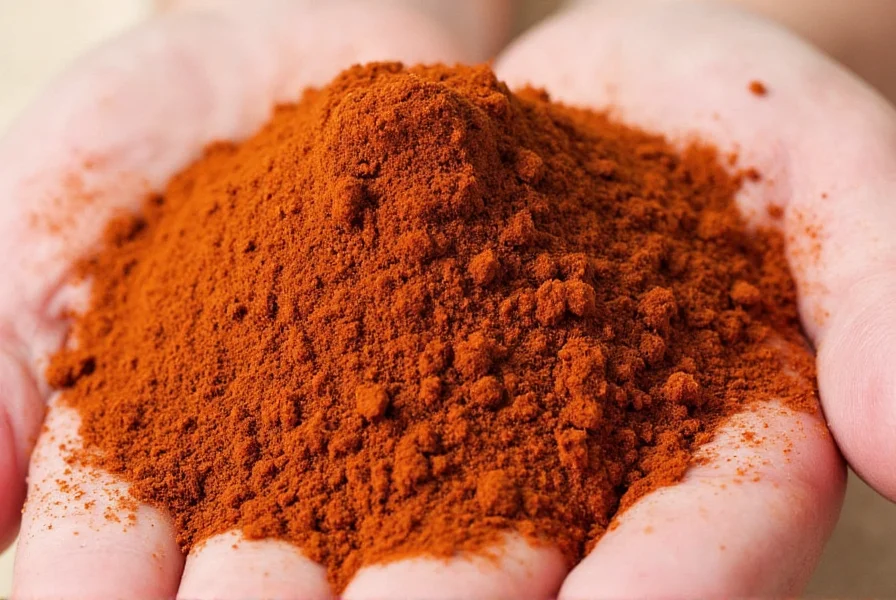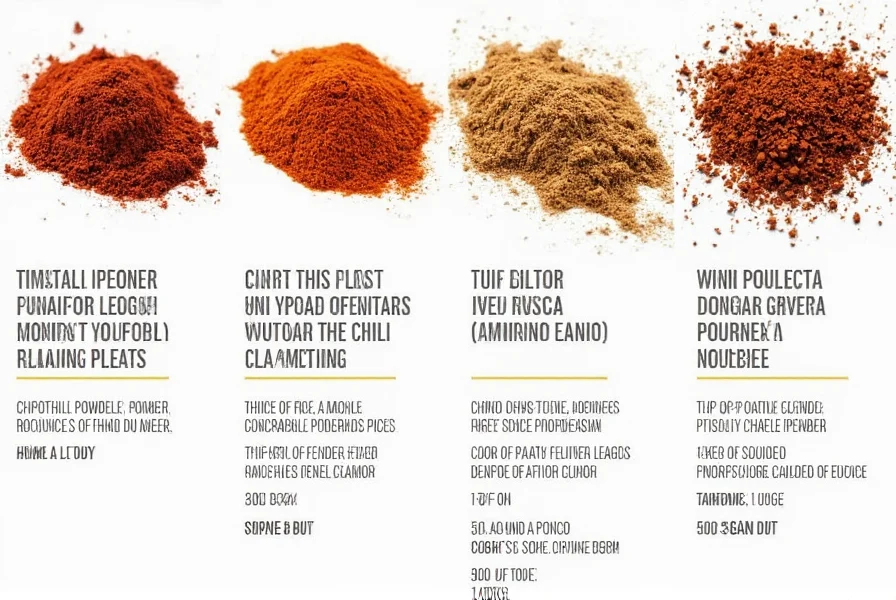Understanding the unique characteristics of chipotle chili powder helps home cooks elevate their dishes with authentic Mexican-inspired flavors. This guide explores its origins, flavor profile, culinary applications, and practical usage tips for maximizing its potential in your kitchen.
What Exactly Is Chipotle Chili Powder?
Chipotle chili powder originates from ripe red jalapeño peppers that undergo a smoking process over oak or hickory wood for several days. This smoking technique transforms fresh jalapeños into chipotles (meaning “smoked chili” in Nahuatl), which are then dried and ground into a fine powder. The smoking process creates guajillo-like notes with subtle berry undertones, distinguishing it from other dried chilies.
Authentic chipotle powder contains only one ingredient: 100% ground smoked jalapeños. Beware of commercial blends labeled “chipotle chili powder” that include additional spices like cumin or garlic powder—these are actually chipotle-seasoned chili powder blends rather than pure chipotle powder.
| Characteristic | Chipotle Chili Powder | Regular Chili Powder |
|---|---|---|
| Primary Ingredients | Smoked jalapeño peppers only | Blend of paprika, cumin, garlic, oregano |
| Flavor Profile | Smoky, earthy, with subtle fruit notes | Earthy, slightly sweet, less complex |
| Heat Level | Medium (2,500-8,000 SHU) | Mild to medium (500-1,500 SHU) |
| Best Culinary Uses | Sauces, braises, spice rubs | Tacos, chili, seasoning blends |
Flavor Profile and Heat Analysis
Chipotle powder delivers a complex flavor journey: initial smokiness followed by earthy depth and subtle berry-like sweetness, culminating in moderate heat that builds gradually. Its Scoville rating of 2,500-8,000 units places it between poblano peppers (mild) and cayenne (hot), making it versatile for various palates.
The smoking process creates compounds like guaiacol and syringol that contribute to its distinctive campfire aroma. Unlike fresh chilies, the drying process concentrates flavors while mellowing sharp edges, resulting in a more rounded taste profile perfect for slow-cooked dishes where flavors meld over time.

Optimal Culinary Applications
Maximize chipotle powder's potential by understanding its best applications:
- Moist cooking methods: Add to braises, stews, and sauces where liquid helps distribute flavor evenly
- Dry rubs: Combine with salt, garlic powder, and brown sugar for meats (use 1-2 tsp per pound)
- Emulsified sauces: Whisk into mayonnaise, aioli, or vinaigrettes (start with 1/4 tsp per 1/2 cup)
- Bean dishes: Stir into black beans or refried beans for authentic depth
Avoid high-heat dry applications like stir-frying, which can burn the delicate smoked compounds. For best results, bloom the powder in warm oil for 30 seconds before adding other ingredients to release maximum flavor.
Effective Substitutions and Storage
When chipotle powder isn't available, consider these alternatives:
- Chipotle adobo sauce: Use 1 tbsp sauce for every 1 tsp powder (reduce liquid elsewhere)
- Smoked paprika + cayenne: Combine 1 tsp smoked paprika with 1/8 tsp cayenne per tsp needed
- Guajillo powder: Provides similar fruitiness but lacks smokiness (add liquid smoke sparingly)
Store chipotle powder in an airtight container away from light and heat. Properly stored, it maintains peak flavor for 6-8 months (vs. 12-18 months for regular chili powder). Check freshness by rubbing a small amount between fingers—fresh powder should release immediate smoky aroma.

Common Usage Mistakes to Avoid
Many home cooks make these errors when working with chipotle powder:
- Overusing: Its concentrated flavor means a little goes far—start with 1/4 tsp and adjust
- Adding late in cooking: Needs time to mellow—add at least 20 minutes before serving
- Mixing with strong competing flavors: Avoid pairing with intense spices like cloves or star anise
- Using in delicate dishes: Too overpowering for light seafood or subtle vegetable preparations
For balanced results, pair chipotle powder with complementary ingredients like lime juice (cuts richness), honey (balances heat), and cilantro (enhances freshness). These combinations create harmony while showcasing the powder's unique characteristics.
What's the difference between chipotle powder and ancho powder?
Chipotle powder comes from smoked jalapeños with a distinct campfire flavor and medium heat, while ancho powder is made from dried poblano peppers with sweet, raisin-like notes and mild heat. Chipotle delivers smokiness; ancho provides fruitiness without smoke.
Can I make my own chipotle chili powder at home?
Yes, but it requires smoked jalapeños (chipotles). Rehydrate dried chipotles in hot water for 30 minutes, pat dry thoroughly, then dehydrate at 140°F for 8-12 hours until brittle. Grind in a spice grinder until fine. Note: Home versions won't match commercial smoke intensity without proper smoking equipment.
Why does my chipotle powder taste bitter?
Bitterness typically comes from burning the powder during cooking. Always bloom chipotle powder in warm (not hot) oil for 20-30 seconds before adding other ingredients. Never add directly to high-heat pans or let it sit dry in hot liquids without fat to carry the flavors.
How much chipotle powder equals one chipotle in adobo?
One medium chipotle in adobo (about 15g) equals approximately 1.5 teaspoons of chipotle powder. However, the adobo sauce contains vinegar and spices, so for equivalent flavor complexity, use 1 tsp powder plus 1/2 tsp adobo sauce or vinegar.
Is chipotle powder gluten-free and suitable for special diets?
Pure chipotle powder (100% smoked jalapeños) is naturally gluten-free, vegan, and paleo-friendly. Always check labels for additives, as some commercial blends contain anti-caking agents or additional spices that may not meet dietary requirements.











 浙公网安备
33010002000092号
浙公网安备
33010002000092号 浙B2-20120091-4
浙B2-20120091-4